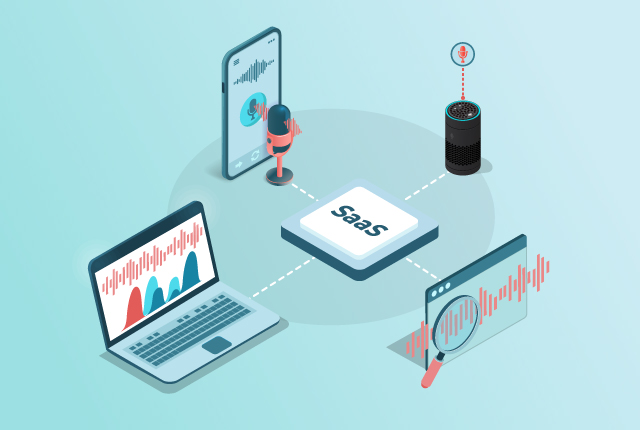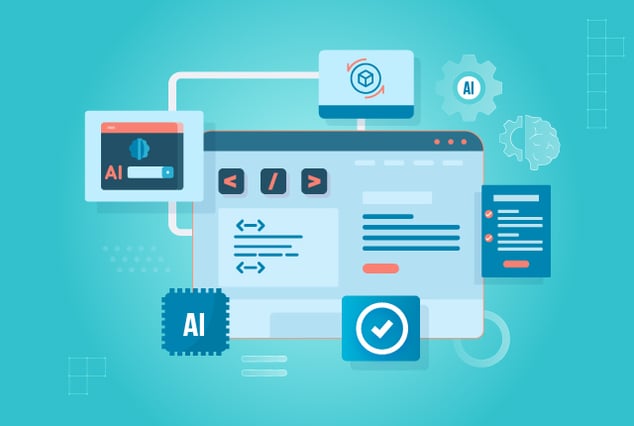
Voice recognition and voice assistants have become central to the software as a service (SaaS) industry, changing how we interact with SaaS and promising benefits for businesses and users alike.
But if you plan to offer a voice assistant or other voice recognition tool, it’s important to thoroughly test your offering before bringing it to market.
How Voice Recognition and Voice Assistant Testing are Shaping the SaaS Industry
Voice recognition and voice assistants are altering the landscape of the SaaS industry in several meaningful ways.
-
Enhanced User Experience
In the ever-evolving landscape of SaaS, user experience remains a paramount concern. Voice recognition and voice assistants have emerged as transformative tools, introducing natural language interactions. Thorough testing ensures this transformation is seamless.
Example: Imagine a testing scenario for a voice recognition system within a project management SaaS application. A test case could involve a user speaking the command, "Create a new task for the marketing project due next week," to assess how accurately and swiftly the voice assistant interprets this complex natural language input. Successful testing results in a seamless user experience, eliminating the need for manual input and complex menus.
-
Accessibility for All
Voice recognition and voice assistants improve accessibility, particularly for individuals with disabilities or those who find traditional input methods challenging. These technologies enable hands-free interaction, which makes navigating and interacting with software easier for people with mobility impairments. This inclusivity is a win-win, improving the overall user experience and ensuring SaaS applications are accessible to everyone.
Example: Testing involves simulating hands-free interaction for users with mobility impairments. A test case could require the voice assistant to assist a user with visual impairments in real-time collaboration. The test would ensure that voice commands allow them to edit documents, format text, and review changes efficiently, verifying that the SaaS application is accessible to everyone.
-
Streamlined Workflows
Efficiency stands as the linchpin of productivity within the SaaS domain, and voice recognition and assistants usher in workflow automation that diminishes manual input. Comprehensive testing plays an instrumental role in validating this transformation.
Example: In the testing of a voice assistant within a CRM SaaS platform, a test case could involve the user issuing a command like, "Log a call with X from Y company regarding the new contract." Testing would validate that the voice assistant accurately records this information and triggers automated follow-up tasks and reminders, thus confirming the efficiency of the workflow optimization.
-
Data Entry and Analysis
Voice recognition technology presents a paradigm shift in data entry and analysis. Comprehensive testing becomes indispensable for upholding data accuracy.
Example: Testing the accuracy of data entry through voice recognition might entail a test case where a trader dictates complex financial data into an analytical SaaS tool. The test would evaluate not only the accuracy of data input but also the voice assistant's ability to perform real-time analysis, offer insights, and make recommendations, thus ensuring reliable data-driven decision-making.
-
Customer Support
Customer support in the SaaS industry transforms by integrating voice recognition and assistants. Voice-enabled chatbots take center stage, enhancing response times and overall customer satisfaction.
Example: When assessing a voice-enabled chatbot for customer support, a test case could simulate a scenario where a customer encounters an issue with an e-commerce SaaS platform. The test would evaluate whether the chatbot can effectively understand the customer's query, access relevant purchase history, and provide tailored solutions, ultimately confirming that testing enhances customer satisfaction and support efficiency.
-
Security and Authentication
The advent of voice recognition and assistants raises legitimate concerns regarding privacy and security. Robust security measures, rigorously validated through comprehensive testing, become non-negotiable.
Example: Security testing in a banking SaaS application using voice biometrics for user authentication could involve rigorous testing of the voice data collection and processing procedures. A test case might evaluate the accuracy and reliability of voice biometric authentication, ensuring that only authorized individuals can access sensitive financial information, thus safeguarding user data from unauthorized access.
Future Trends of Testing Voice Recognition
As voice recognition and voice assistants continue to evolve, several future trends are worth noting.
-
Multilingual Expertise
With the SaaS industry's global nature, voice assistants must support multiple languages to cater to diverse user bases. Future advancements in voice recognition technology will focus on improving accuracy and performance across various languages, ensuring seamless communication for users worldwide.
-
Emotion Detection
Voice assistants of the future may be capable of detecting and interpreting human emotions. This feature can enhance the user experience by adapting responses and interactions based on emotional cues. Emotion detection can significantly impact the SaaS industry's customer service and personalized experiences.
Emotion recognition, also known as affective computing, is a technology that involves identifying and analyzing human emotions from various sources, such as text, speech, facial expressions, and physiological signals. Features like word choice, sentence structure, and context are extracted to reveal underlying emotions.
Emotion recognition from text involves identifying emotions like happiness, sadness, anger, fear, and more. AI models analyze linguistic cues, context, and specific keywords to infer the author's emotional state.
Challenges with Voice Recognition and Voice Assistants
While voice recognition and voice assistants offer numerous benefits, a few concerns need to be addressed:
-
Privacy and Security
As voice data is collected and stored, privacy breaches and unauthorized access are risks. SaaS providers must implement robust security measures to protect user information and strictly comply with data protection regulations.
Example: Smart Home Security Camera
Imagine a scenario where a voice-activated smart home security camera uses voice recognition to allow homeowners to access the camera's live feed using vocal commands. While convenient, this raises privacy concerns. If the voice data is not adequately secured, an unauthorized person could mimic the homeowner's voice and gain access to the camera feed, compromising their privacy and security. Robust encryption and authentication protocols are essential to prevent such breaches.
-
Accuracy and Reliability
Voice recognition systems must strive for higher accuracy and reliability. Errors in transcription or misinterpretation of commands can lead to user frustration and decreased trust in the technology. Thorough voice assistant testing and regular updates are crucial to improving accuracy and reliability.
Example: Voice-Controlled Virtual Assistant
Consider a voice-controlled virtual assistant integrated into a car's infotainment system. If the voice recognition system is not finely tuned for accuracy, it may not be able to understand the driver's commands, leading to frustration and potential safety hazards. For instance, a driver saying "Call Mason" could be misinterpreted as "Call Nathan," resulting in unintended calls. Regular testing and updates are crucial to ensure accurate and reliable voice recognition, especially in critical environments like driving.
-
User Awareness and Consent
SaaS providers must prioritize user awareness and obtain explicit consent for collecting and using voice data. Transparent privacy policies and clear communication about data usage will build trust and ensure users feel comfortable using voice recognition and voice assistants.
Example: Voice Commands in E-Commerce
In an e-commerce SaaS platform, users can place orders and make payments using voice commands. However, users need to be adequately informed about how their voice data will be used and stored so that they can embrace this feature. The platform should proactively seek user consent to address this concern, explaining that voice data will only be used for transaction purposes and not stored indefinitely. Transparent communication and precise privacy policies build trust and encourage user adoption.
Importance of Voice Assistant Testing
In the SaaS industry, where voice recognition and voice assistants are pivotal, comprehensive quality assurance (QA) is indispensable. QA testing ensures precise user command interpretation, relevant responses, and robust data security. Thorough testing identifies and rectifies performance issues, guaranteeing a flawless user experience.
Examples of QA's Impact in Voice Assistant Testing
-
Accuracy of Voice Commands
In a healthcare SaaS application, QA testing ensures that voice recognition accurately transcribes medical notes, preventing errors in patient records. This accuracy is paramount for patient safety and regulatory compliance.
-
Response Relevance
In a virtual classroom SaaS platform, QA verifies that the voice assistant provides educational responses to student queries. This relevancy enhances learning experiences, fostering engagement and knowledge retention.
-
Data Security
In a financial SaaS application, QA evaluates security measures protecting sensitive financial data accessed via voice commands. Robust security safeguards are vital to protect user information from breaches.
-
Performance Optimization
In an e-commerce SaaS platform, QA identifies and addresses performance bottlenecks in voice-driven product searches. Optimizing system performance ensures users receive swift and efficient search results, enhancing satisfaction.
-
User Experience Consistency
In a customer service SaaS application, QA ensures that the voice-enabled chatbot consistently delivers a high-quality user experience. Effective handling of diverse user queries maintains customer satisfaction and loyalty.
How to Test Voice Assistant in SaaS?
Testing voice assistants on SaaS platforms involves several key steps:
- Primary Test Voice Recognition: Begin by testing the voice recognition capabilities of the assistant. Evaluate its ability to understand and accurately transcribe user commands in different scenarios and accents. Conduct rigorous testing to identify any limitations or areas for improvement.
- Voice Assistant Test: Test the voice assistant's responses and interactions. Ensure that it provides relevant and helpful information based on user queries. Evaluate its ability to handle complex questions and provide accurate real-time answers.
- Perform Specific Tasks: Test the assistant's functionality and compatibility with various SaaS applications. Verify its ability to perform specific tasks, such as creating appointments, sending emails, or retrieving data from different sources. Conduct integration testing to ensure seamless integration with other software and services.
How can QASource help?
QASource offers significant expertise in developing and deploying voice recognition technology and voice assistants. For example:
- Testing Voice Commands: Our QA professionals test and validate the accuracy and reliability of voice commands. This involves verifying that the system accurately recognizes and responds to user input and ensuring that voice commands work as intended across different accents, languages, and dialects.
- Accessibility Testing: Ensuring that voice recognition technology is accessible to all users, including those with disabilities, is paramount. Our QA teams test the system's compatibility with assistive technologies and adherence to accessibility standards, such as WCAG (Web Content Accessibility Guidelines).
- Data Accuracy and Security: Our QA professionals perform testing to identify and rectify any vulnerabilities that could lead to data breaches or unauthorized access, which is especially crucial given the sensitive nature of voice data.
- Performance Testing: Our teams ensure voice recognition features operate efficiently and without latency. This includes stress testing to simulate high-volume usage scenarios and identifying and addressing performance bottlenecks.
- Privacy and Compliance: Compliance with privacy regulations, such as GDPR and CCPA, is critical in voice technology due to the collection of sensitive user data. We help verify that the system complies with these regulations, including obtaining user consent for data collection and implementing robust data protection measures.
- Integration with SaaS Applications: Many voice assistants are integrated with SaaS applications. We assist in validating the seamless integration of voice technology with these applications, ensuring a smooth user experience across platforms.
Conclusion
Voice recognition and voice assistants have revolutionized the SaaS industry, providing an improved user experience, enhanced accessibility, streamlined workflows, and advanced data entry and analysis capabilities. However, privacy, security, accuracy, and user consent concerns must be addressed to ensure widespread adoption and trust in these technologies.
Comprehensive QA testing is crucial to validating and enhancing the performance of voice assistants on SaaS platforms.





